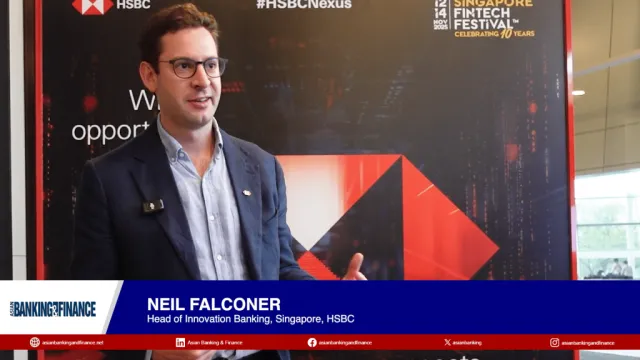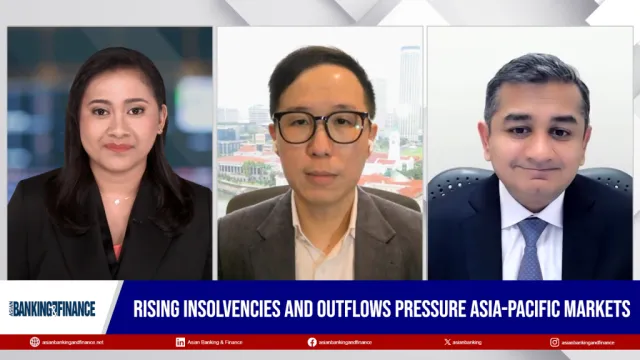
10 signs your investment management system is older than you
By Nick QuinHow often do you see someone tapping their feet to music from a walkman or speaking on a gigantic mobile phone that can no longer fit into a pocket? The answer is – hardly. Technology must evolve to meet the demands and needs to its users.
Most of these (some may say ‘ancient’) devices that we have used in the past have been eclipsed by the remarkable technology that we use today in the digital era.
While we may laugh at the fact that these devices were ever found to be cutting-edge back then, we cannot discount the fact that they served their purpose.
However, as society progresses they soon become as anachronistic as a horse and cart. This principle underlies all areas of technology, including finance. People and businesses can no longer depend on legacy devices.
They demand and expect technology that not only enables them to grow and adapt within their chosen industry, but offer the ability to mitigate risks and reduce total cost of ownership.
As the realm of business shifts and moves into new directions, so too, must the technology that manages it.
Do not fear change
When a company is sailing smoothly in a sea of profitable years it is difficult for some to move away from this ‘comfort zone’ even though change would result in greater profitability and growth.
The truth is, this complacent mindset results in companies eventually operating on outdated, legacy systems that stymie business growth. Inevitably, successful products and businesses will come under attack by competitors due to this complacency.
To remain competitive and secure longevity, truly successful businesses must constantly evolve, or risk becoming obsolete.
This Darwinism of the business world is particularly important in the realm of investment management, where companies must move with industry trends, comply with ever changing regulations, whilst always seeking to improve performance for their clients.
Everyone is aware just how precarious investments are particularly in the current volatile economy, investing in modern investment systems to enable progress is not an option, it is a necessity.
Fix it before the crash
Most companies make the mistake of waiting until their investment management system becomes stale and their competitors (or worse, their customers) push them to change.
They try to maximise profits from their investment management system and in the process are forced into reactive innovation. This approach is an evolutionary dead end. In such a competitive industry it is a survival of the fittest.
So how do you create a sense of urgency when there is no visible external pressure?
Here are 10 signs that your investment management system is going to kick the bucket before you do. If the ship is sinking, jump!
Like the passengers aboard the Titanic as it was sinking, jumping into the icy cold waters still offered more hope of survival then if they were to stay on board.
Likewise, most ‘sinking’ systems usually observe a diminishing client base as clients jump to newer and more up-to date systems not only to improve efficiency but also to meet the industry demands.
A diminishing client base will therefore indicate that your system is getting old. How many clients does your investment management system vendor have compared to 5, 10 years ago?
Codes you cannot crack
The development and integration of disparate systems in complex applications and IT environments has been a slow, painful and expensive process.
Even the simplest business change has required developers to reinvent the wheel; bolting new functionality onto aging architectures or creating redundant codes that further isolate legacy systems and data.
Asset managers want to be able to access data quickly and not be muddled in a web of reporting that would cause even a spider to go dizzy.
Regular upgrades are a must
If you find yourself funding research and development for your software vendor to keep up with market changes, on top of regular maintenance fees, your platform is burning.
A serious software company invests back into its own product to continue to meet core requirements such as regulatory changes or new asset classes.
Regular updates reflect a progressive system that is constantly up-to-date. It also helps to be informed about system upgrades, so that overall costs can be monitored and fall comfortably under budget. What percentage of revenue does your investment management system provider put back into R&D?
Slow time-to-market Legacy systems represent a business logic that is buried under rigid architecture of coding and developments that are tightly bound and resistant to change.
As a result, this may prevent the system from satisfying the evolving business requirements because simple changes take what may seem like an eternity to complete and test.
Changes tend to cause significant ripple effects and require more regression testing. This, in turn, increases maintenance and evolution costs.
If you have a system that’s stopping you from setting up and establishing a strong market presence, then you may miss the boat.
A slow out dated platform will diminish the competitive edge of a company to be able to deliver their goods or service to their customers.
Who again?
Uncertainty over the ownership of your system vendor also represents a major risk for asset managers. If the organization, or the product you use, is up for sale then your organisation is at risk. Who will own the company or product next? What plans will they have to support your segment or your market? Will they force you onto another product and end of life your current one? The risks are real, and need to be understood.
Work in progress/indefinitely!
When a system appears to be on maintenance mode without any visible progress for an extended period, alarm bells should be ringing off the wall, particularly so if maintenance fees are consistently being paid. This translates to an increasing lack of support for your business.
Probable causes could be lack of application knowledge due to the departure of original developers, as well as missing or redundant documentation, which ultimately, only points downwards.
STOP! I can’t move
Have you ever had one of those nasty leg cramps you get as you are walking? Well, in business, operational capability can cramp too, and no amount of rubbing will relieve an inefficient platform.
A fund manager might approach you to support a new assetclass, and the inevitable answer you will give will be no, because you are hindered by the inadequacies of your platform.
Ultimately, these limitations will restrict your business development. Remember we are talking about survival of the fittest and a business that cramps is a business that will not survive.
Pile on the sheets
Another symptom of an aging investment management system is the excessive use of spreadsheets to compensate for the lack of core functionality such as OTC derivatives support.
This excessive use of spreadsheets will result in a lack of efficiency, increased risk and stunted scalability. If your business doesn’t have a strong core, it will end up as a repository of unorganised and inaccessible data.
Accessing the data coherently will be a headache.
Lost
Is the information that you need really only a click away? Or is it buried deep in a system full of data that has no organisation, no transparency and even worse, no use?
The implications of not being able to access your information and not being able to use that vital data to make informed decisions, is immeasurable.
Those that act fast, progress. Those that hesitate are left behind.
How long does it take you today to establish your total exposure to any given counterparty, across all asset classes, geographies, sectors, and currencies?
Blacksmith trade
Some things that were once vital fade away as the world progresses. Take for example the blacksmith, once a
pillar of society, now almost obsolete. The blacksmith’s skills are still useful and have its own bespoke niche.
Similarly, as programming language advances to become more user-friendly and easy to integrate with new open technologies, developers jump onto those opportunities because they do not want to be left behind.
Finding developers to update your legacy systems is like asking them to programme in Latin when they can easily to do it in English. The shrinking talent pool of developers skilled in legacy systems is usually restricted to a core set of people who are difficult to replace.
Therefore, while your system struggles to update slowly, you are losing a competitive edge, and guess what, you are paying much more for a developer that programmes in an outdated code.
Conclusion
If you have mentally ticked off any of these symptoms of a failing investment management system then you quite possibly have a burning platform. Burning is not burnt though, and we have at our hands the tools to extinguish that flame.
The signs of stagnation will only lead to significant costs, added risks and a reduced ability for company growth.
While it is difficult to embrace change, particularly if it is accompanied by an upfront investment, investment managers must look past the initial uncertainties and cost and work to understand the quantifiable benefits that they could reap when they take the jump.
What is the cure for these symptoms you might be ask? The answer lies in being the ‘fittest’, and that means investing in modern technology, establishing business cases to clearly establish the gap between their operational capability and their business strategies.
Those who succeed will require “a burning desire” to become a market leader.
Nick Quin, Regional Director, SimCorp Asia



















 Advertise
Advertise









